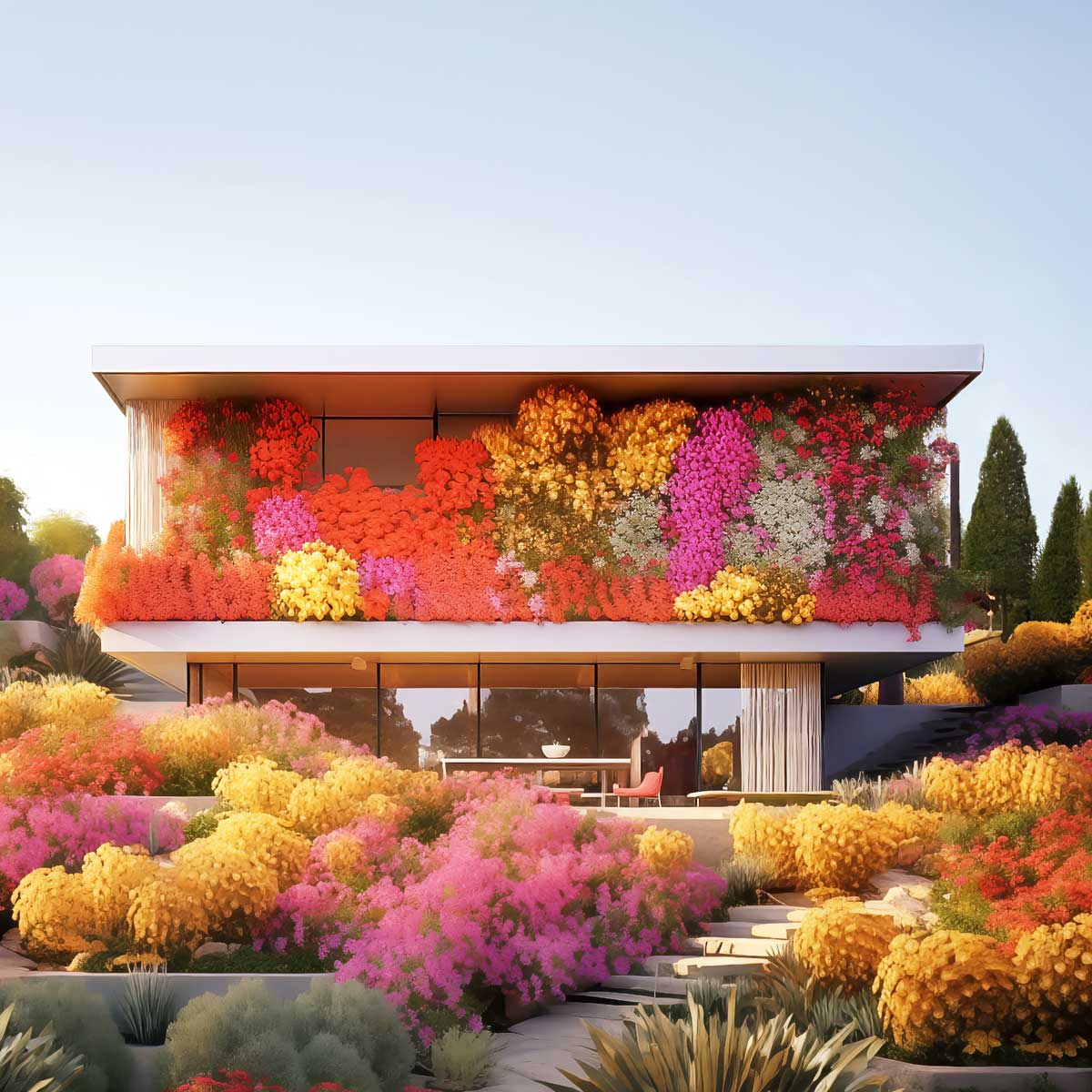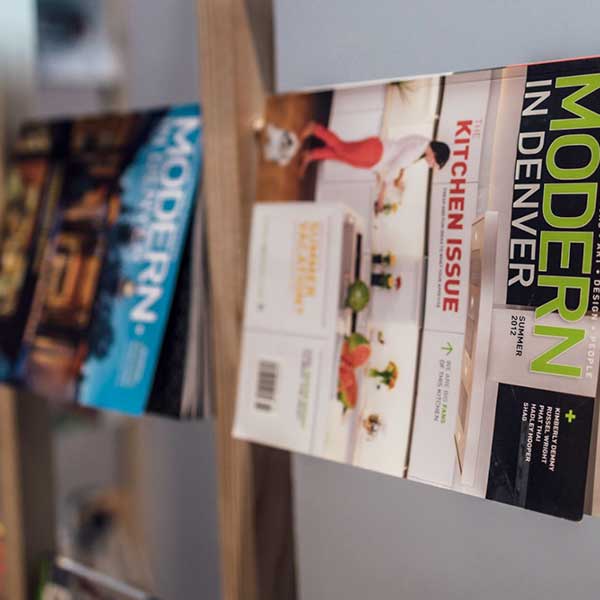A NEW EXHIBIT AT THE ANSCHUTZ MEDICAL CAMPUS REIMAGINES EVERYDAY MEDICAL BYPRODUCTS TO BLEND PROVOCATIVE ART WITH BIOMEDICAL SCIENCE. NO PRESCRIPTION NEEDED.
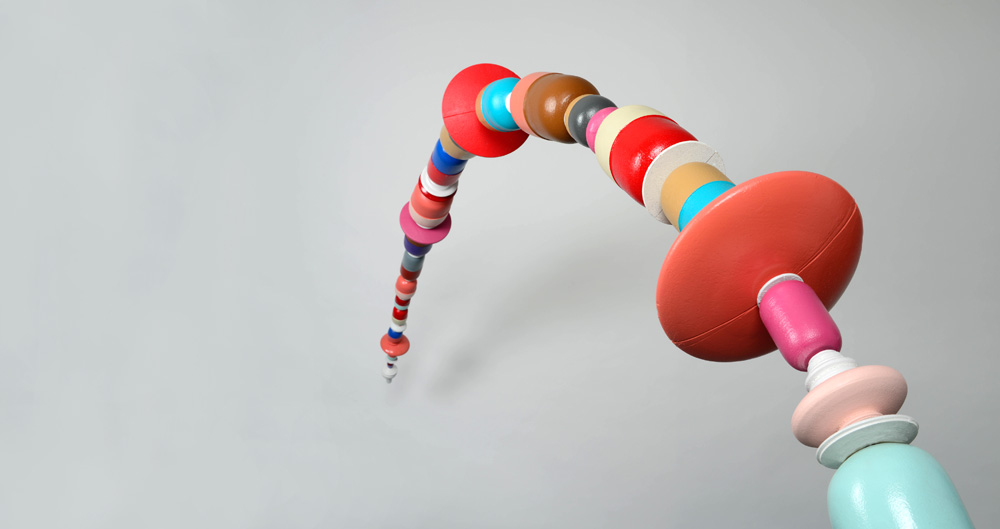
WORDS: Tara Bardeen | IMAGES: Trevor Brown Jr. and Chris Rogers
With glossy, colorful, and alluring shapes, artist Terry Maker’s oversized capsules are disarmingly playful. Yet get a little closer and you’ll find they’re layered not only with paint and resin, but with shredded dollar bills and medical detritus that is far from easy to swallow. In her current gallery show, Time Release, at the Fulginiti Pavilion for Bioethics and Humanities at the Anschutz Medical Campus, Maker transforms medical castoffs into bold contemporary artwork designed to spark a conversation about our relationship with medicine.
“The pill is a quintessential icon of American culture,” said Fulginiti Pavilion curator Simon Zalkind. “It encapsulates our history, shapes our lives, and embodies our belief in limitless progress and our pursuit of happiness, youth, longevity, sexual prowess, and freedom from a multitude of physical and emotional woes.” In selecting Maker’s Time Release exhibition for inclusion among the growing number of thought-provoking shows that have occupied the Pavilion’s 1,000-square-foot art gallery, Zalkind’s goal is to inspire a deeper conversation about the intersection of art, science, and spirituality.
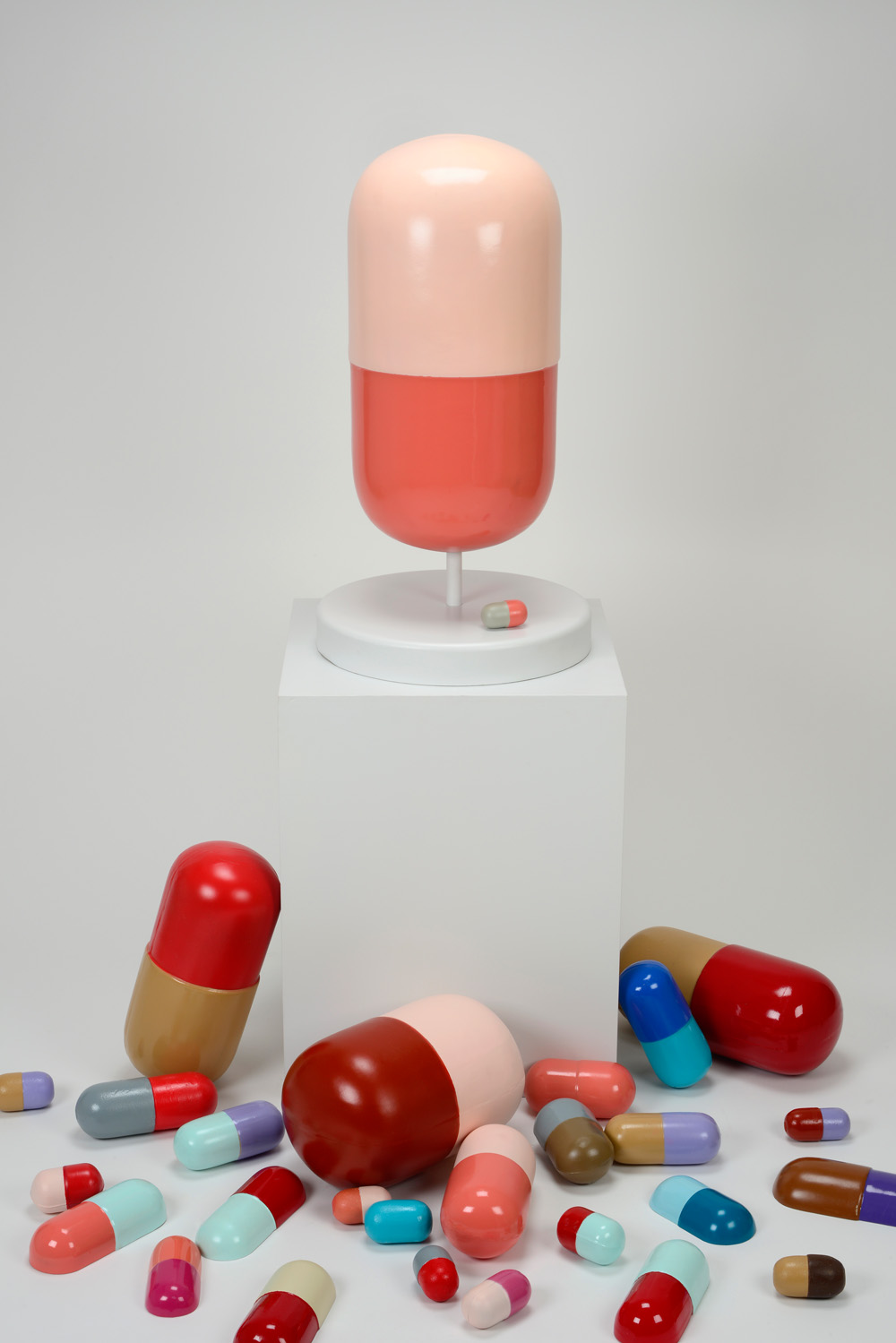
Named after the University of Colorado Health Sciences Center’s former chancellor Vincent Fulginiti, MD, the Pavilion is a place for reflection and inspiration that brings together students and faculty from all the schools on campus. The gallery is open to the public and presents an average of four contemporary art exhibitions per year, each exploring topics related to bioethics. As curator, Zalkind is charged with bringing in artists whose works are not only visually appealing, but which also probe issues tied to medical science. Previous exhibitions dealt with topics including poisons, gender, autopsies, Multiple Sclerosis, the Holocaust, and 9/11, among others.
Terry Maker’s works are a logical fit for this setting. They are richly layered not only in meaning, but also quite literally, as her process centers around a sort of archeological dig through which she works to excavate the meaning found in the detritus of everyday life. Said Maker, “I often start with building crates or forms, which I then pack with layers of materials that are part of or integral to the meaning of the ultimate finished piece. In this case, it’s found medical documents, copies of scientific research, copies of old prescriptions, cast off medicine bottles, and pills.” These castoffs are then combined with traditional art materials, including resin, plaster, and paint to create a thick mass that Maker physically manipulates by slicing, cutting, grinding, scraping, and sanding, as if to expose the very essence of the subject she is exploring.
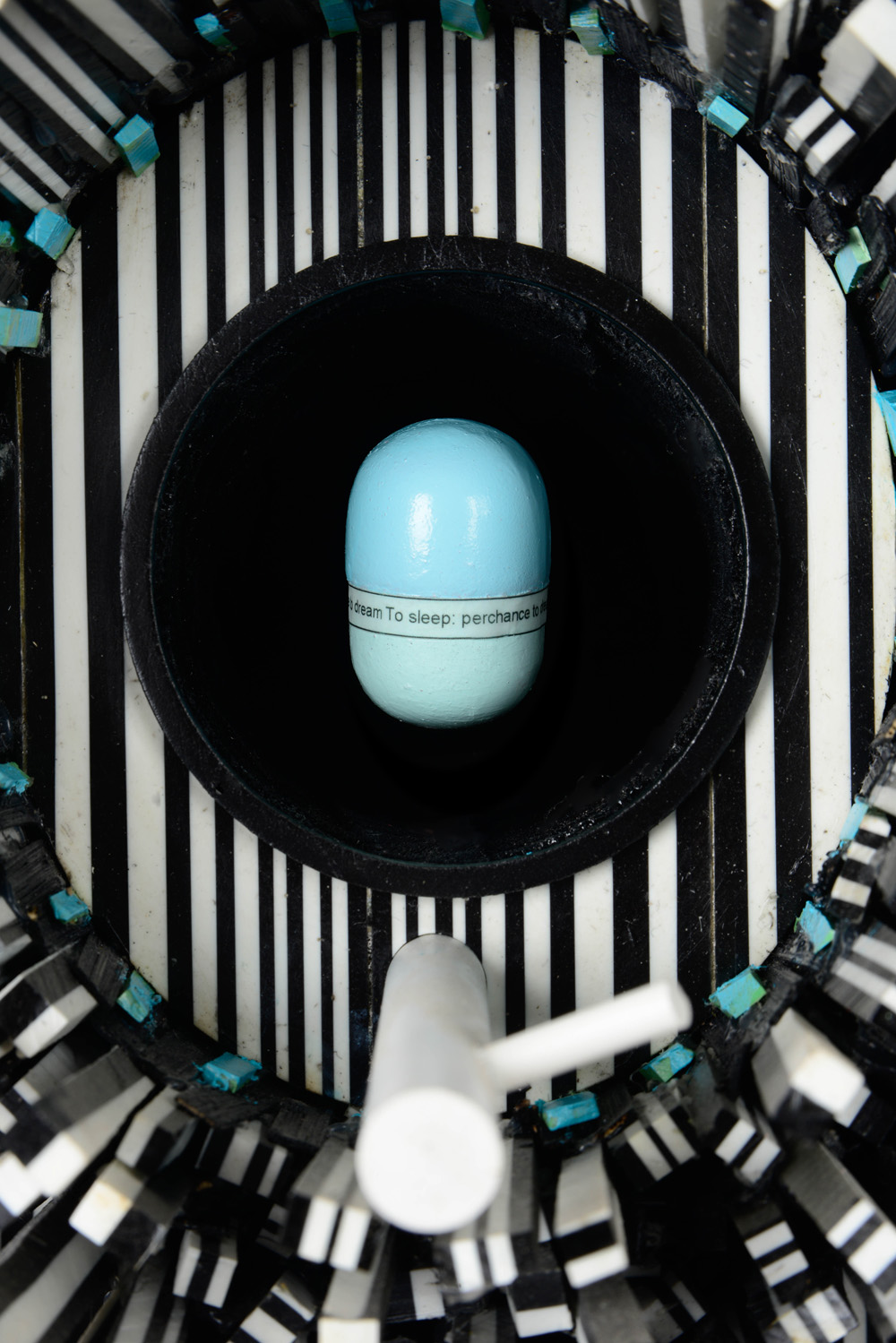
For Maker, this exploration is quite personal, as she has struggled with depression much of her life. At a time of great darkness, anti-depressant medication quite literally changed her life. And yet, she also came to realize that the pills were only part of the solution, and that embracing a deeper sense of spirituality enabled her to recover more fully. In creating the comically large pills featured in Time Release, Maker toys with the viewer. These capsules are delightfully inviting, but impossible to swallow, thus inviting observers to consider how a quick solution may not always be as straightforward as it seems — and that perhaps one should pause for reflection before swallowing.
In one piece, titled “Job’s Lament,” a large army of sad soldiers is portrayed marching on an uphill incline. The scale of the piece is immense, emphasizing the tremendous struggle each of us faces in the quest to find perfect health, freedom from emotional distress, and possibly even redemption of a spiritual kind. Maker is fascinated by the connection between two seemingly opposed forces: pharmacology and faith. She noted that “embodied in this vehicle that one swallows everyday is this hope and faith in the material world, in the scientific world to heal, and hopefully to make all things better.”
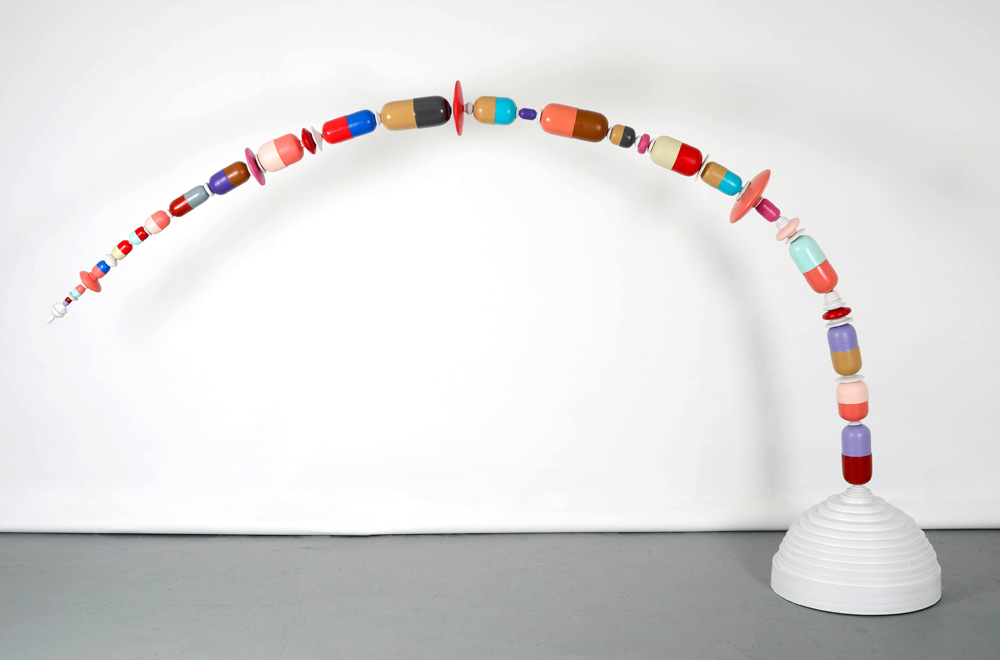
As future doctors, pharmacists, dentists, and public health coordinators pass through the hallways of the Fulginiti Pavilion, art may prove to be just the right prescription for expanding the discussion on how medication, meditation, and even prayer, can help patients find health and happiness.
TERRY MAKER – TIME RELEASE
Medical & Pharmaceutical Constructions
Fulginiti Pavilion for Bioethics and Humanities
13080 E. 19th Ave. Aurora, CO 80045
Show runs through February 16, 2017
Terry Maker is represented in Denver by the Robischon Gallery
+robischongallery.com
+ terrymaker.com


